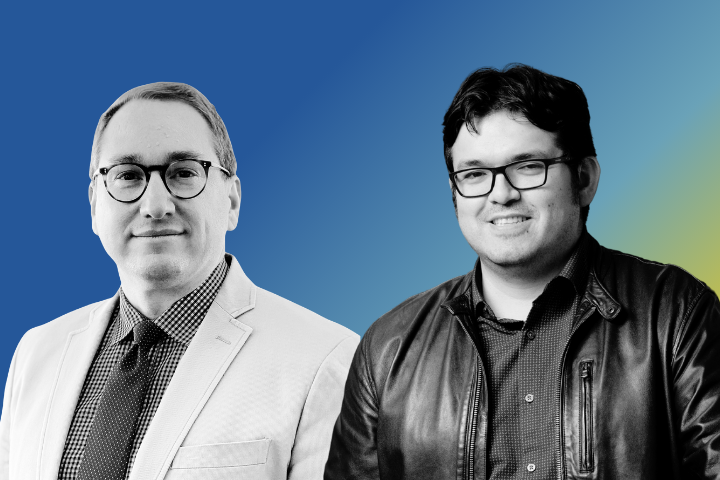Brighter together: How UC Irvine’s collaboration with Los Alamos National Laboratory is supercharging science

Deputy Group Leader Michael Pettes of Los Alamos National Lab and Professor Luis Jauregui of the UC Irvine Department of Physics & Astronomy.
Earlier this year, the UC Irvine School of Physical Sciences and Los Alamos National Laboratory (LANL) expanded their collaboration by establishing two new joint appointments that bridge the two institutions. Professor Luis Jauregui of the UCI Department of Physics & Astronomy began a joint appointment at LANL, and LANL Deputy Group Leader Michael Pettes began a joint appointment as a professional researcher in the UC Irvine Department of Physics & Astronomy.
The collaboration is expanding opportunities for scientific discovery at UC Irvine and LANL.
Jauregui’s research group, which focuses on developing new quantum materials that could one day be used to make new kinds of technology, has already made advancements thanks to the new joint appointment.
“For my group, the appointment provides access to facilities and perspectives that we could not replicate at UCI, while also creating a natural bridge for my students and postdocs to engage with national lab scientists,” said Jauregui. “It has allowed me to connect my lab’s expertise in quantum materials with LANL’s Center for Integrated Nanotechnologies (CINT) and its unique capabilities in high-magnetic field measurements and advanced instrumentation. I’ve also had the honor of serving as a CINT User Executive Committee member.”
Recently, Jauregui’s lab published research describing a quantum material developed at UCI and LANL called hafnium pentalluride. Abbreviated HfTe₅, it’s a material that could lead to technologies that sound borrowed from science fiction, including devices that do not require an electric charge to work and which can withstand bombardment by cosmic rays without malfunctioning – an essential feature for any future interplanetary travel.
Magnetic field experiments at CINT, Jauregui explained, made the HfTe₅ work possible.
“The cross-pollination of ideas with LANL has been incredibly rewarding,” Jauregui said. “Some of the most valuable insights have emerged from discussions – sometimes even over Zoom – about unexpected connections between projects.”
The collaboration is also providing training opportunities for graduate students like Marshall Campbell, who, as a member of Jauregui’s lab, is also a close collaborator with Pettes’ group.
Campbell was one of the first UCI graduate students to receive the UCI-LANL-SoCal Hub Graduate Fellowship, which then led to him receiving a UC-National Lab In-Residence fellowship.
“I was able to work with Marshall on both my funded projects, where I first hired him as a GEM Fellow, as well as through the UC-LANL fellowship programs,” said Pettes. “This has accelerated my work, and we now have several papers together, including in Physical Review Letters and Nature Materials.”
Pettes explained how there are aspects of his work that are only possible at UCI, which include an unexpected collaboration with Professor Javier Sanchez-Yamagishi of the Eddleman Quantum Institute.
“My colleague Dr. Han Htoon just hired one of Javier’s former graduate students, Dr. Andrew Barabas, as a postdoc in CINT due in large part to the quality of preparation that UC Irvine faculty give their students,” said Pettes. “Andrew is now helping my postdoc with a new experiment involving quantum materials.”
The University of California continues to invest in collaborations between the UCs and UC-managed labs. The UC Office of the President recently announced a multi-million dollar initiative involving five UC campuses, including UC Irvine, aimed at fostering collaborations with not just LANL, but also Lawrence Livermore National Laboratory and Lawrence Berkeley National Laboratory.
“I see my appointment not just as a personal opportunity but as a bridge between UC Irvine and LANL,” Jauregui said. “It’s already fostering strong collaborations across our institutions and training the next generation of scientists to think collaboratively and across disciplines. That’s a benefit I hope will outlast any single project.”
